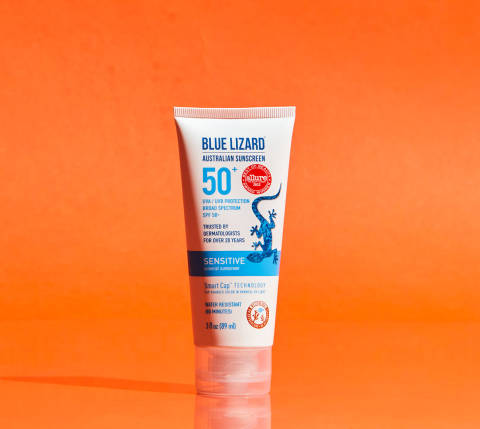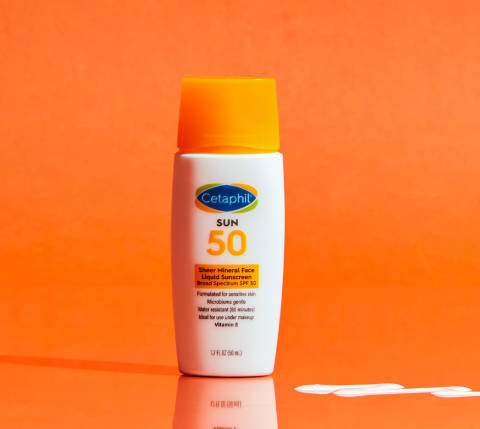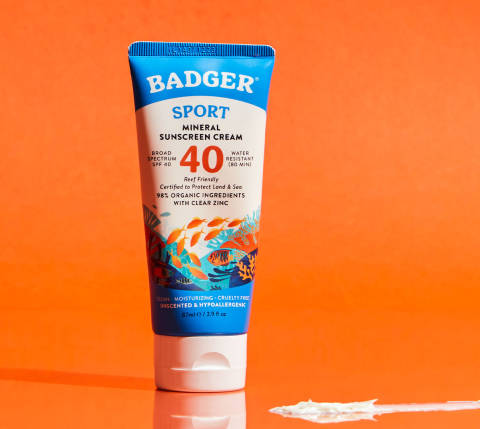*This article includes mentions of merchants or brands who are partners of DoorDash, and DoorDash may receive a commission if you choose to make a purchase from these merchants or brands.
We all know we should be wearing sunscreen to avoid skin cancer and searing pain, but, according to dermatologists, sunscreen isn’t just for sunny days — it’s for every day. But not all sunscreens are created equal, and the type of sunscreen you wear matters. If you’ve been slacking on your SPF game, now’s the perfect time to get serious about sun protection and consider all of your options, including mineral sunscreen.
What is mineral sunscreen?
There are two types of sunscreens: mineral and chemical. According to the American Academy of Dermatology, “Chemical sunscreens work like a sponge, absorbing the sun’s rays. They contain one or more of the following active ingredients: oxybenzone, avobenzone, octisalate, octocrylene, homosalate, and octinoxate. Physical (mineral) sunscreens work like a shield. They sit on the surface of your skin and reflect the sun’s rays. Physical sunscreens contain the active ingredients zinc oxide and/or titanium dioxide.”
How do I know if my sunscreen is a mineral formula?
Sunscreen is highly regulated, so it's easy to tell if your sunscreen is a mineral sunscreen or not. To find out, just flip to the back of the box or the bottle and check out the active ingredients. If you see either zinc oxide or titanium dioxide, it's a mineral sunscreen. If it lists active ingredients instead of (or in addition to) those, it's a chemical sunscreen or a hybrid.
Why use mineral sunscreen?
While chemical sunscreens tend to be easier to rub into the skin without leaving a white cast, mineral sunscreen formulas have come a long way over the years. They can have a lightweight feel and apply easily to skin. Plus…
They can be better for sensitive skin.
“Mineral sunscreens that contain zinc oxide or titanium dioxide are much better for sensitive skin,” says board-certified dermatologist Sonya Kenkare, MD, FAAD. “Chemical sunscreen ingredients can cause a reaction that results in irritation for people with sensitive skin. Conversely, mineral sunscreens are generally well tolerated across the board,” says Kenkare. “This is in part because zinc oxide is very gentle on the skin.”
They’re considered better for the environment.
Mineral sunscreens are considered to be “reef-safe” as they don’t contain the chemicals oxybenzone or octinoxate (the active ingredients found in many chemical sunscreens). NOAA research has shown that these chemicals can cause damage to coral reefs and are even banned for sale in several popular tourist destinations, like Hawaii and Key West. Although still allowed for use, most chemical sunscreen products have phased out oxybenzone over the past several years.
They’re safe and effective (officially).
The two most common ingredients in mineral sunscreens are zinc oxide and titanium dioxide. These are the only two sunscreen ingredients that the FDA generally recognizes as safe and effective or GRASE. To make a GRASE determination, the FDA looks at how readily a substance absorbs through the skin into the bloodstream and how toxic or benign it is to humans. In 2021, the FDA declared that only zinc oxide and titanium dioxide could be classified as GRASE while 12 other common sunscreen ingredients (including oxybenzone, octinoxate, homosalate, and octisalate) were proposed as not generally recognized as safe and effective. The FDA has called for additional safety data because of health concerns and studies that show these ingredients are all systemically absorbed into the body after use.
They provide immediate protection.
Unlike chemical sunscreens, which typically take 30 minutes to absorb into the skin, mineral sunscreens offer immediate protection — no need to wait to go out in the sun or water after application. Think of it like this: Mineral sunscreens are like putting on a shield (once you put on a shield, you’re protected right away). Chemical sunscreens need time to absorb into your skin before they can effectively absorb UV rays.
How I Chose the Best Mineral Sunscreens
When choosing the best mineral sunscreens to test, I followed the recommendations outlined by the American Academy of Dermatology and focused only on:
formulas that offer broad-spectrum protection (protects against both UVA and UVB rays)
formulas with a listed SPF of 30 or higher
formulas that are water resistant for 80 minutes
After narrowing my search, I ordered 12 mineral sunscreens from DoorDash and evaluated their key features. Attributes I considered during testing included ease of application, whether or not a formula left behind a white cast, and how lightweight (or heavy) a formula felt on the skin.
After extensive testing, I found these to be the best four mineral sunscreens — all available for delivery on DoorDash — to keep your skin protected and healthy for the sunny days ahead.
Best Mineral Sunscreen Overall
Blue Lizard Sensitive Mineral Sunscreen

SPF: 50
Active ingredients: zinc oxide (10%), titanium dioxide (8%)
Blue Lizard’s sensitive mineral sunscreen is your classic, no-nonsense, chemical-free lotion that provides head-to-toe protection for the whole family. There are no added fragrances, parabens, or any ingredients that are common irritants.
It’s easy to spread and wears comfortably on the skin. The formula wasn’t as thick as other mineral sunscreen lotions I tested, which made application and absorption much easier. After a few seconds of diligent blending, it was imperceptible and there was no white cast whatsoever. Bonus point: The tube has a fun cap that changes color from clear to blue in harmful UV light!
Best Mineral Face Sunscreen
Cetaphil Sheer Mineral Liquid Sunscreen for Face

SPF: 50
Active ingredients: zinc oxide (12%)
Cetaphil’s sheer mineral face sunscreen is hypoallergenic, fragrance-free, and formulated with prebiotics to protect the skin’s microbiome. They also put in vitamin E to help hydrate the skin. The formula is ultra-lightweight and dries with a matte finish as advertised. It also required zero effort to rub in and didn’t leave a greasy residue or white cast. This sunscreen can even be worn seamlessly under makeup. It’s also worth noting that at around $15, Cetaphil’s mineral face sunscreen is much easier on the wallet than its competition.
Best Sport Mineral Sunscreen
Badger Sport Mineral Sunscreen

SPF: 40
Active ingredients: zinc oxide (22.5%)
Badger’s sport mineral sunscreen offers maximum water and sweat resistance for athletes, people who work outdoors, or anyone who spends the hottest part of the day sweating in direct sunlight. This formula is 98% organic and made with only four ingredients (compare that to other brands that have upwards of 20!): zinc oxide, organic sunflower oil, organic beeswax, and sunflower vitamin E made from sunflower oil. It’s also hypoallergenic and unscented. Though it's thicker than most and takes a little effort to rub in, it doesn’t feel sticky or tacky on the skin like some other sport sunscreens. Bonus point: Badger is a Certified B Corp, ensuring their commitment to better the planet over profits.
Best Mineral Sunscreen Spray
Bare Republic Mineral Sunscreen Spray
SPF: 50
Active ingredients: zinc oxide (15%), titanium dioxide (4.3%)
Bare Republic’s mineral sunscreen spray comes in a non-aerosol continuous-spray can and is super easy to apply. It sprays on evenly, but still needs to be rubbed in to avoid a white cast and ensure even coverage (PSA: All spray-on sunscreens need to be rubbed in.) This formula doesn’t contain any synthetic fragrances, but it is scented with natural vanilla and coconut scents — same as their lotion formula. As someone who is sensitive to fragrances, I didn’t find the smell to be overpowering or offensive, but rather refreshing and pleasant, like the perfect beach day.
PHOTO CREDIT:
Photography: Paul Quitoriano
Art Direction: Sarah Ceniceros Gomez






